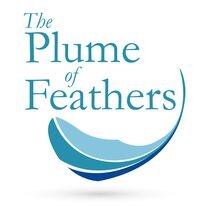Portscatho derives its name from the Cornish for 'boat cove' and in the 1700s was part of the manor of Pettigrew, it's neighbour, Gerrans being in the manor of Nampity.
While Gerrans was chiefly dependant on agriculture the village of Portscatho was more concerned with fishing and even had a boat building yard at far end of the village, where even today old copper nails can sometimes be found amongst the rocks. There are many records of pilchard fishing at Portscatho. When catches were good the village prospered but some years when vast shoals of little silvery fish did not visit the bay times were very hard for the locals. As early as 1626 records survive of 18 pilchard seine boats working out of the village. Along the shore there were numerous low built open fronted fish cellars. Here the fish were cleaned, salted and packed into wooden barrels. Some were kept to feed the local families through the winter but the vast majority were sold and found their way to mediterranean ports. The last great pilchard catch in Gerrans Bay was in 1908 and credited to the landlord of the Plume of feathers, Edward Peters.
Pilchard fishermen, Portscatho
The Plume of Feathers was built in 1756 for the Jennings family. The Inn now one of the three oldest buildings in the village was built in the Wayfield, now forming the centre of the village. The Plume was advertised to let in 1791 as a 'well accustomed inn' with stable and with 4 acres of exceedingly good land. The Plume of Feathers like the other local inns brewed their own beer in days gone by. The beer was brewed in what is now the cellar bar. The water for the brewing was channelled from the village pump just outside and fed via a wooden guttering through a hole in the wall which can still be seen. The village pump in those days stood in what is now the middle of the road and was only moved to its present position with the arrival of the motor car.
With the opening of the railway into Cornwall in 1859 it wasn't long beforePortscatho was being visited. In those early days you either left the train at Grampound Road and travelled to the village by a horse drawn vehicle or you left the train at Falmouth and arrived by Percuil by boat and then by horse drawn bus through Gerrans and down to Portscatho. In 1868 it was being described as a beautiful water place and in 1876 as afforded a most pleasant prospect to all summer visitors of the much frequented seaside watering place. By the early 1900's a list of visitors staying in the village was published in the local newspaper each week during the summer.
And so far almost one hundred and fifty years the village has welcomed its visitors and The Plume of Feathers is still at the centre of things.
Photo credits: Chris Pollard and Hilary Thompson







